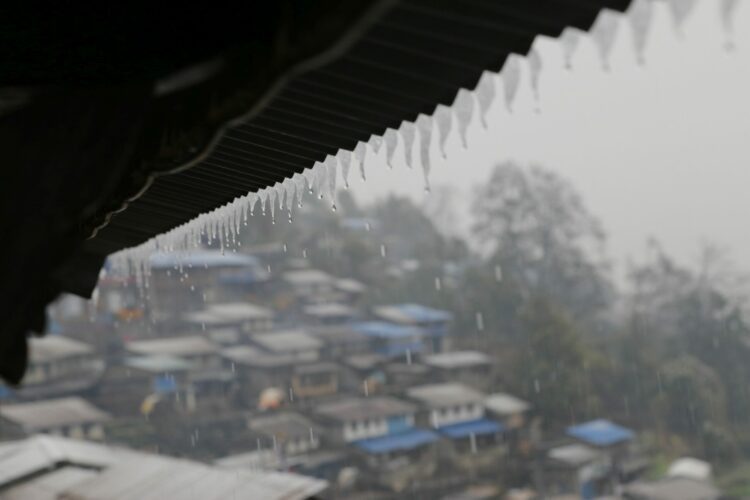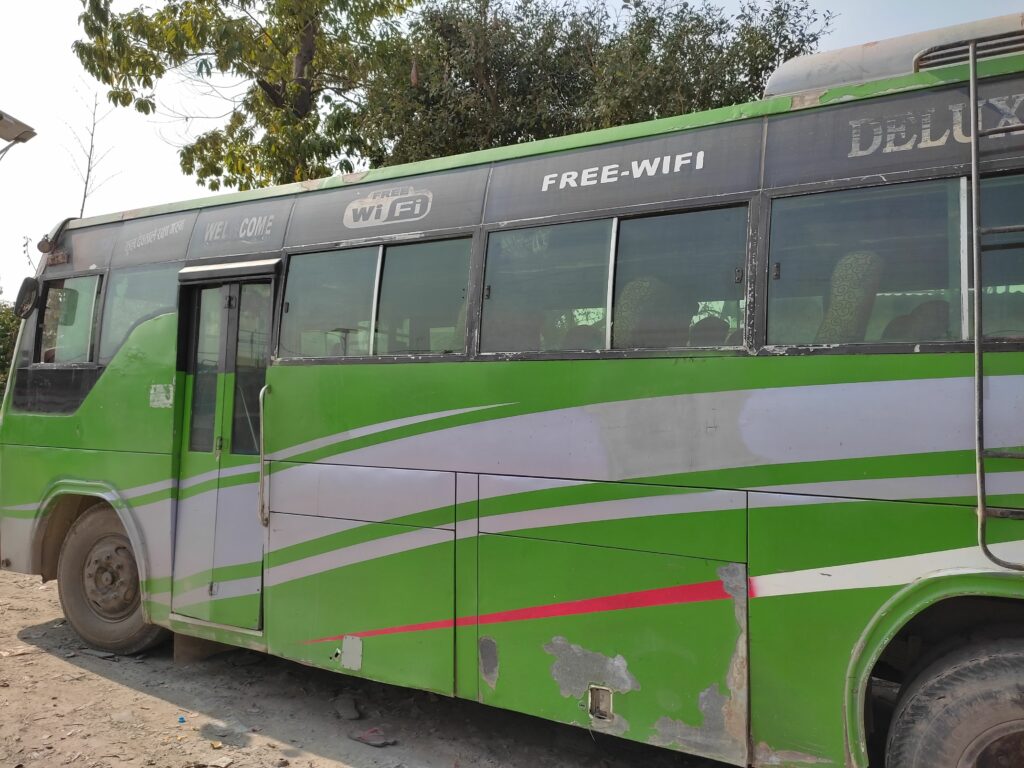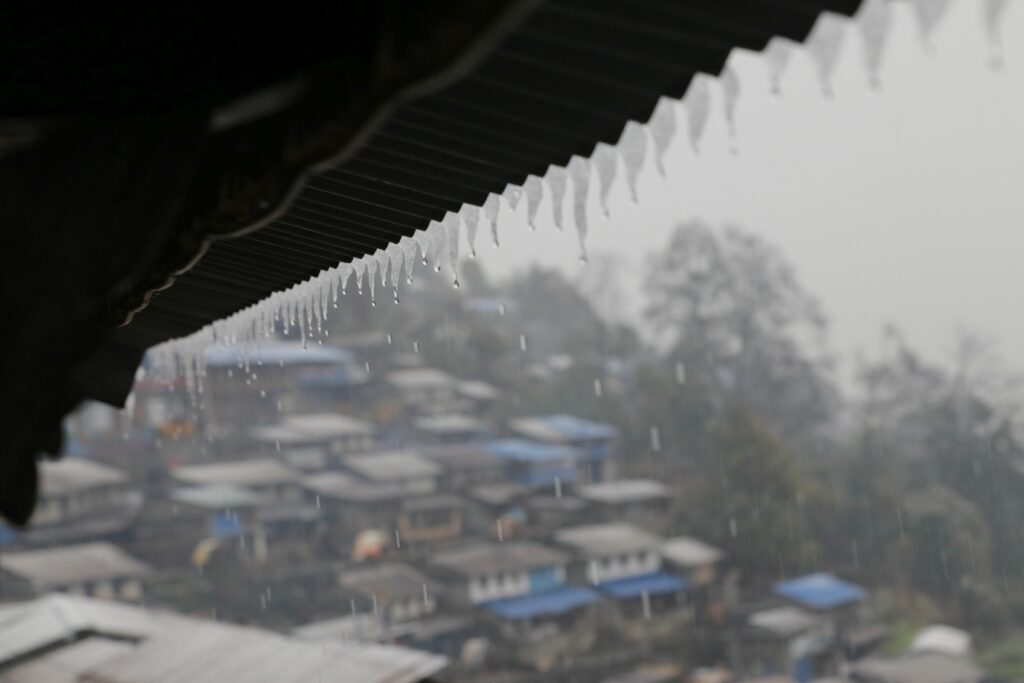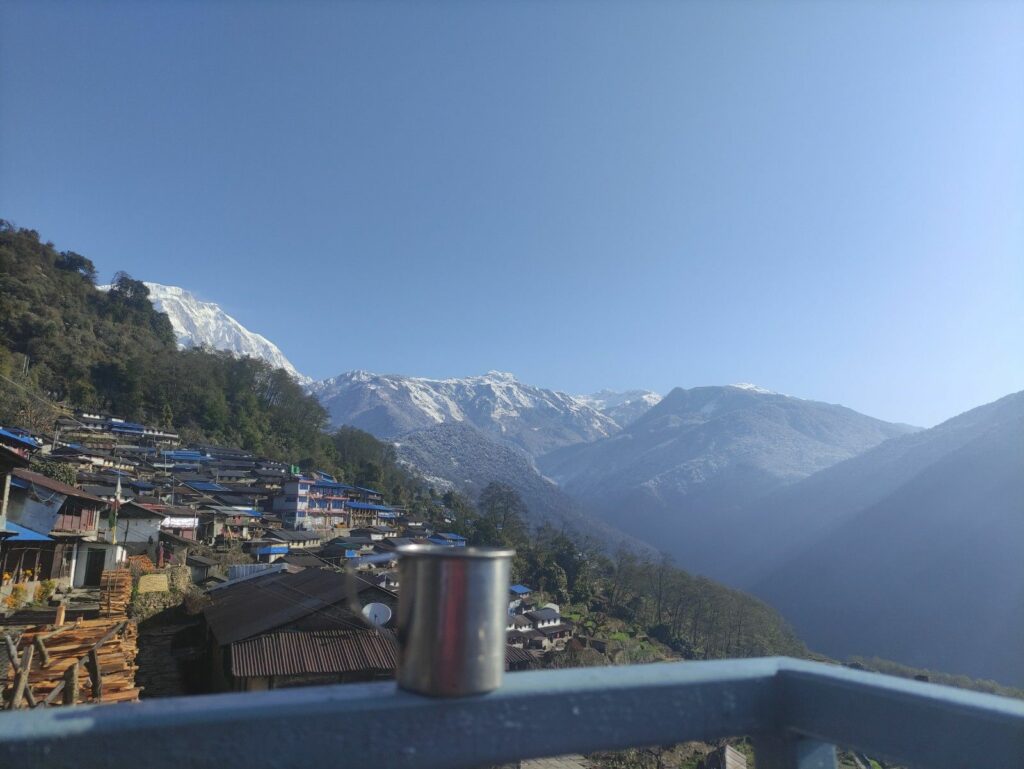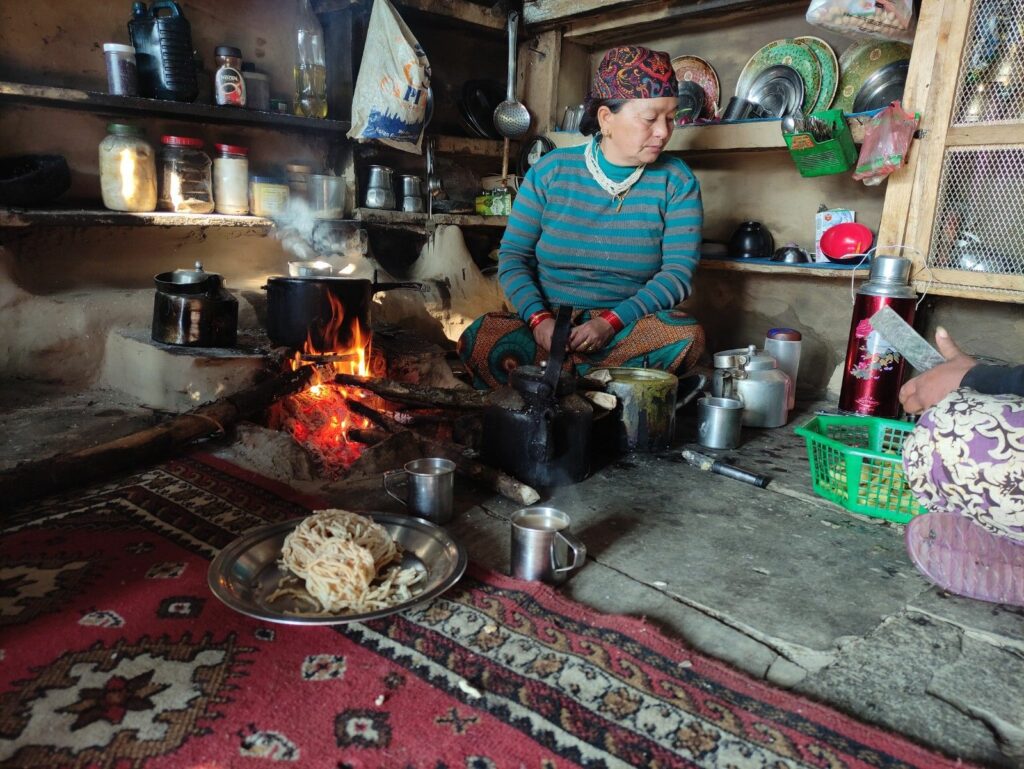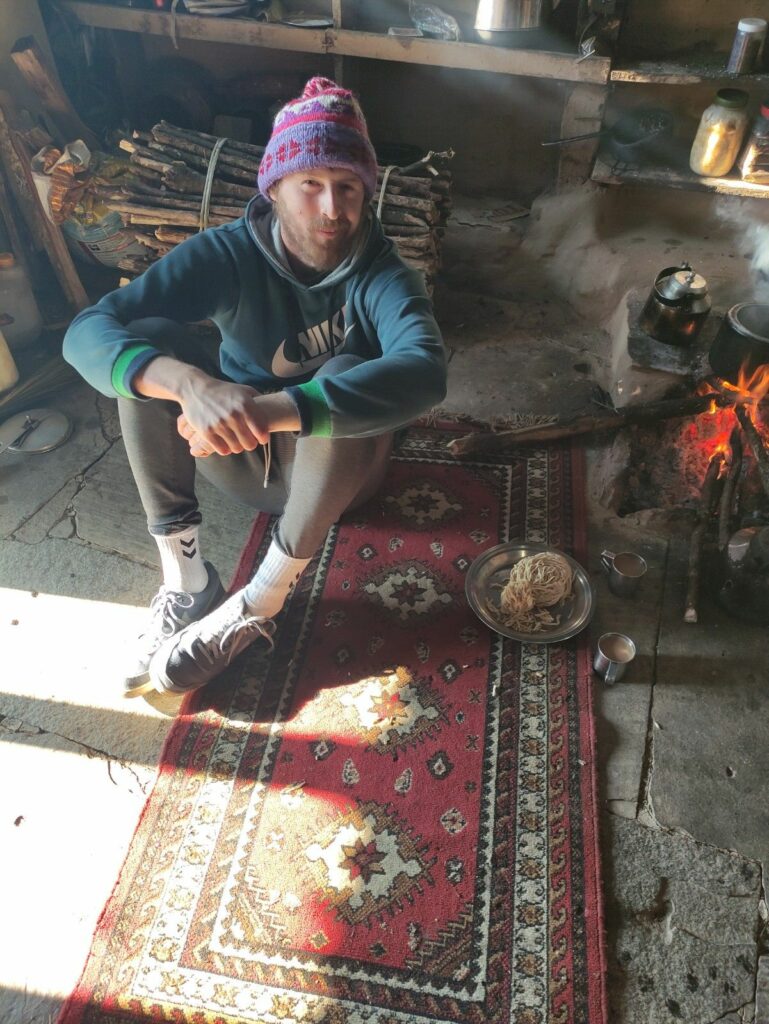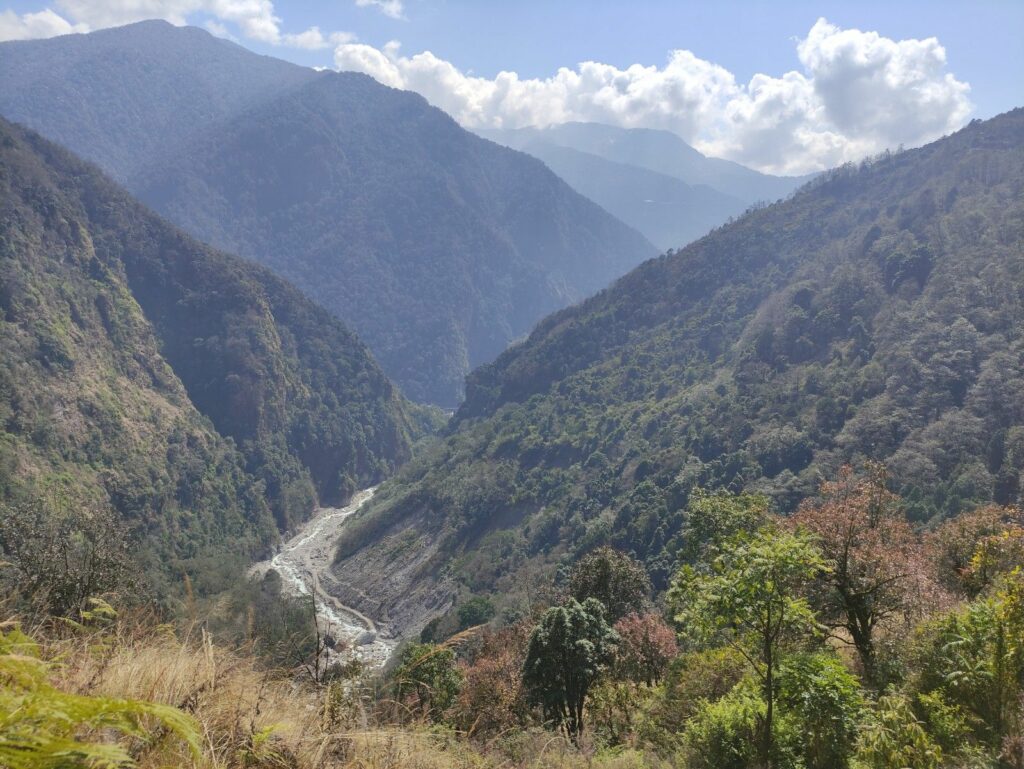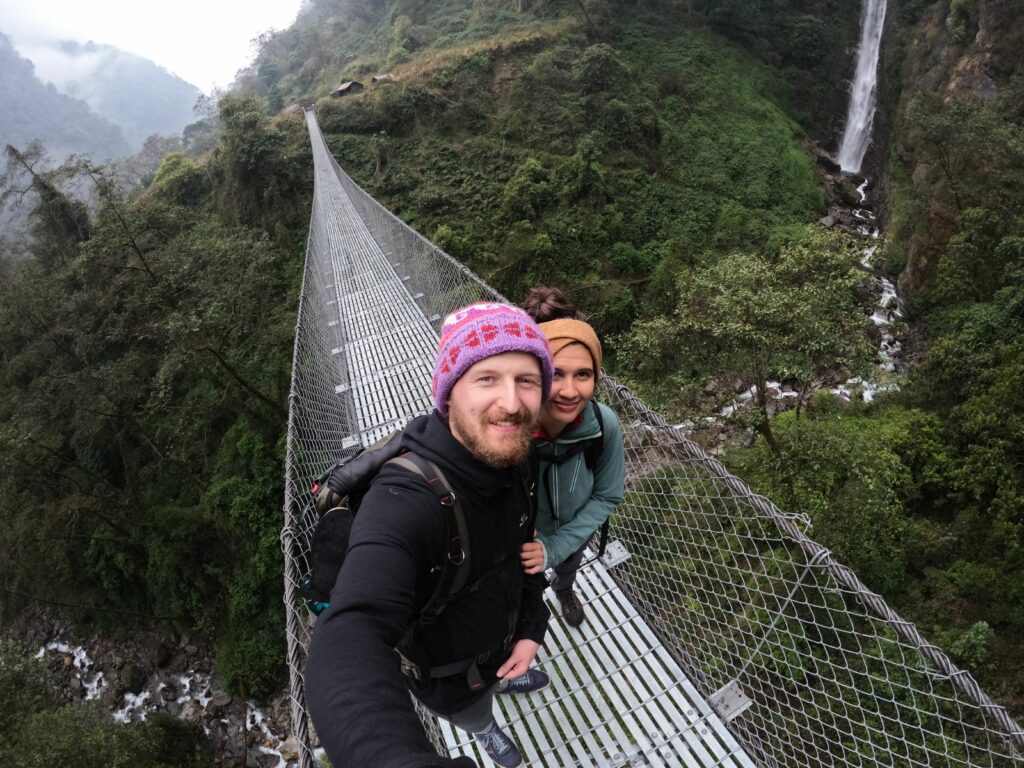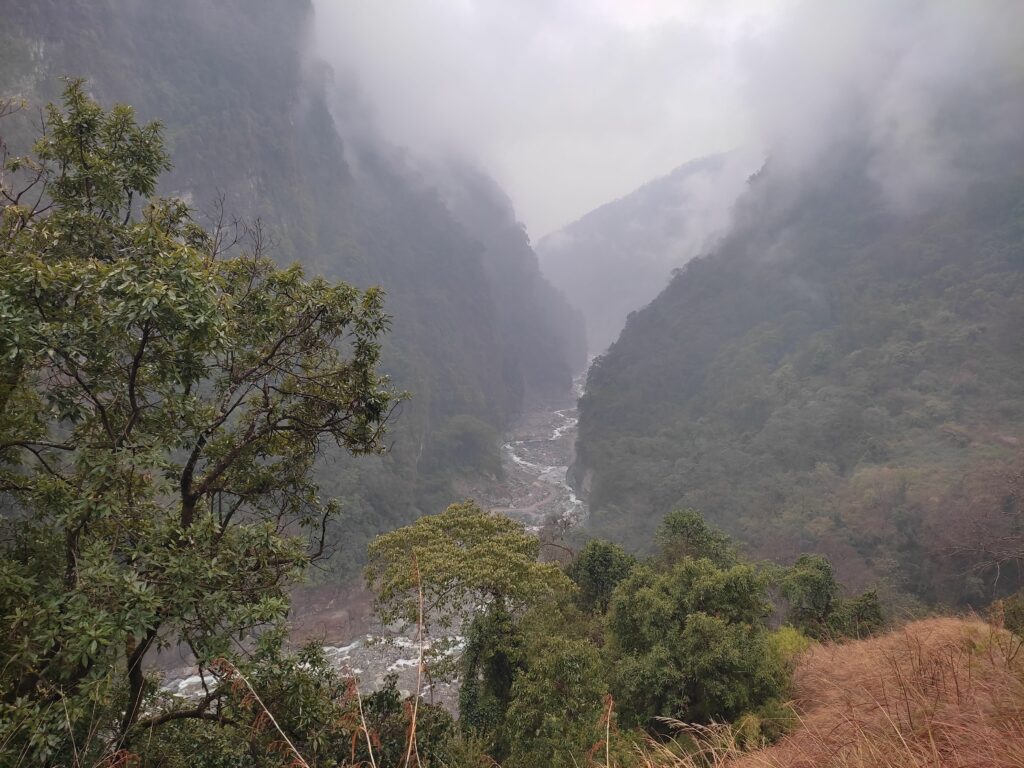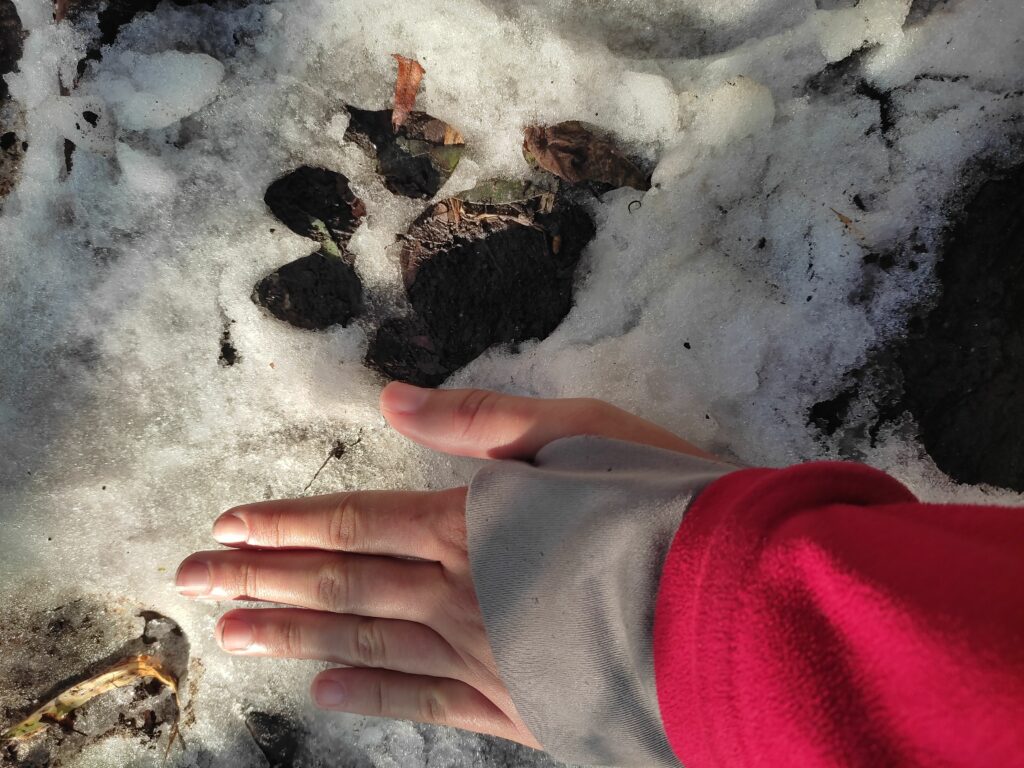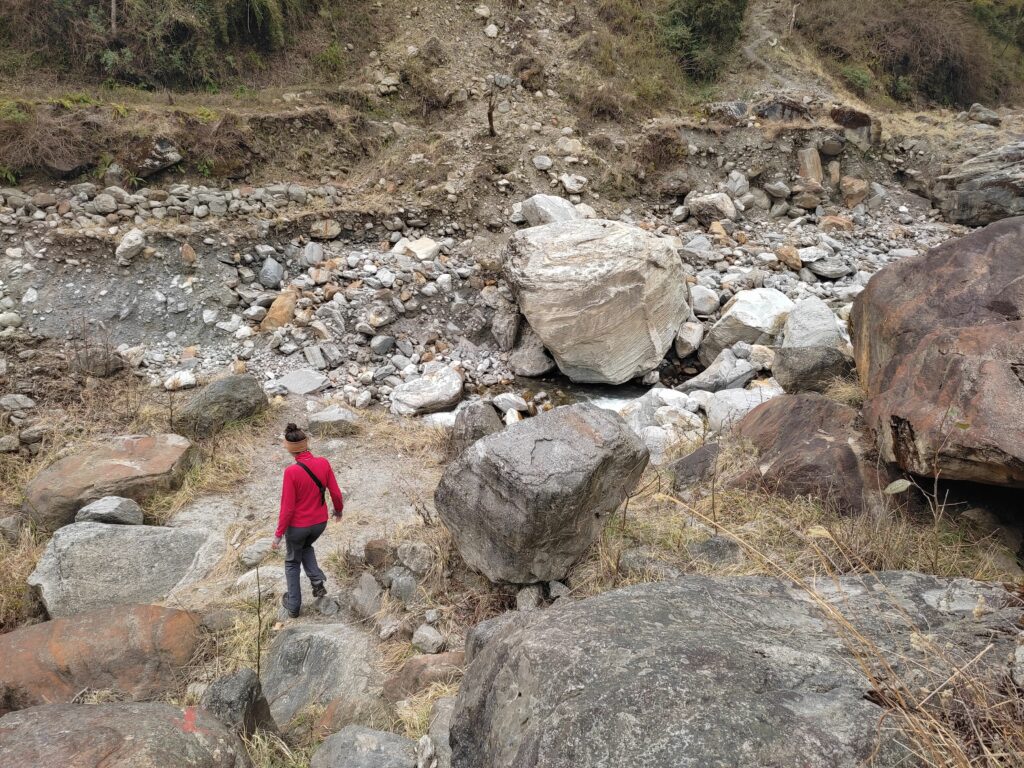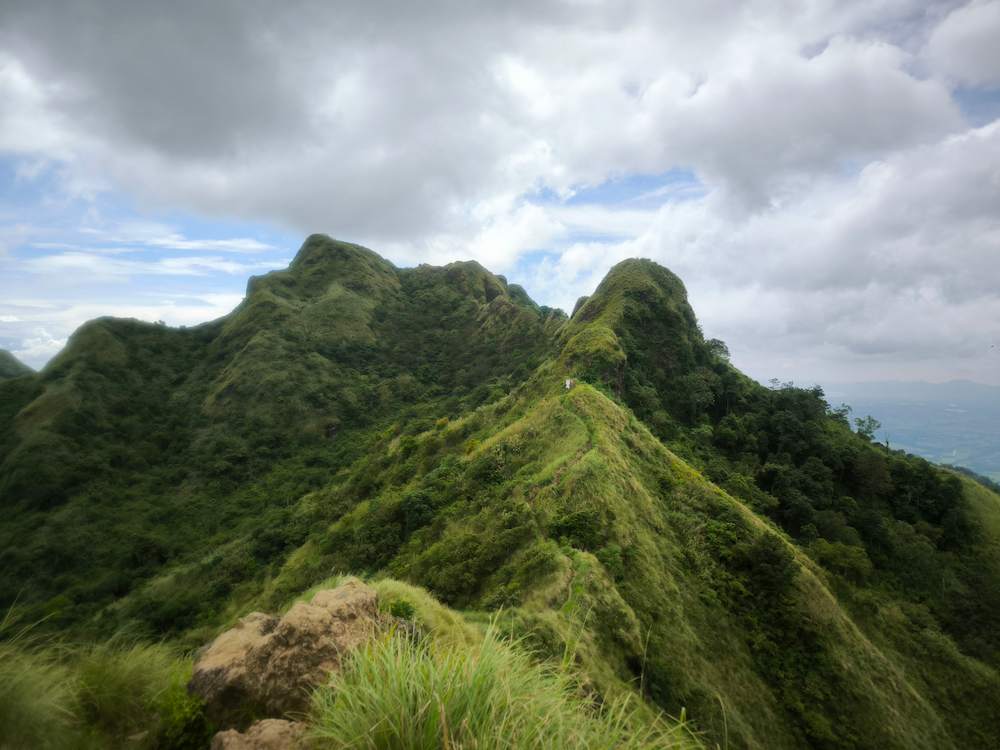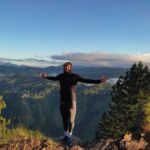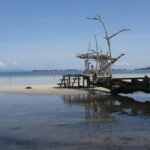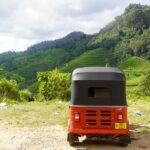Hike to Kapuche Lake
The Kapuche Lake Trek is a beautiful, fairly new hike to the lowest glacial lake in the world. It is located in the Annapurna region and is mainly popular with local tourists and therefore still very original and not so crowded. As it is quite short, it is particularly suitable as an introduction or if you only have a short time available for hiking. Besides a varied hike and beautiful turquoise water, you get an insight into the Gurung way of life. The hike is easily accessible from Pokhara.
Everything important at a glance
Length: 12.5 km each way. As it is not a loop, you unfortunately run the route twice
Duration: 4-5 days, of which 2 days are for arrival and departure
Difficulty level: easy to medium
Permits: ACAP and TIMS
Bus to Sikles
Itinerary of the hike
Day 1: Pokhara – Sikles
The trek to Kapuche Lake itself starts in the Gurung village of Sikles, so most of the first day is spent in transport. There are two ways to get from Pokhara to Sikles:
1.Renting a jeep with driver
2. Taking public transport
Since we decided to take the bus, I don’t know the prices for the jeep rental. But it is definitely more expensive than the bus and the time savings are said to be minimal. If you would also like to travel by bus, I will explain here how you can best do that:
From Pokhara, you first have to take a bus to Kahu Khola (50 NPR). From there, there are 1-2 buses daily to Sikles (400 NPR). The buses only run in the mornings and only when they are full, so it’s best not to set yourself fixed times.
The bus ride itself is super interesting and also adventurous. It goes over bumpy roads, along steep slopes, through small mountain villages up to Sikles at almost 2000m. Although the route is only about 40 km long, the drive takes about 4 hours.
We got caught in a small snowstorm on the way there, but that was because we did the hike in February. To this day, we don’t know exactly why, but on a particularly bumpy stretch of road, all passengers were supposed to spread out on the back rows of seats. At full throttle, we went over deep potholes, which caused my head to make a brief acquaintance with the bus ceiling. On the return journey, there was then no turbo driving over potholes.
In Sikles there are many different hotels and homestays, I would recommend just walking through the town and seeing what you like. Through the snowstorm we just went to the first homestay we saw. We paid 1000 NPR per person, which included the room and 3 meals and drinks. We cooked on an open fire in the middle of the common room and ate classic dahl bat. The accommodation is quite spartan and original, but in my opinion, that’s what adds to the charm. If you are expecting a hot shower, you will be disappointed.
Day 2: Sikles – Hugo Goth
After day 1 ended with a snowstorm, we were greeted by bright sunshine in the morning. We enjoyed our morning tea on the terrace with a view of Annapurna II (7,937 m), Annapurna IV (7525 m) and Lamjung Himal (6983 m). An absolute relief with the temperatures. After a small breakfast consisting of rice crackers and an early lunch (10 am and of course Dal Bhat), which took some getting used to for us, we headed for Hugo Goth.
The path led over long suspension bridges, past waterfalls, up and down many steps, through patches of forest, past golden grasses and small landslides and over rather rickety wooden bridges. At Hugo Goth we were first welcomed with a cup of tea. For dinner we had very tasty dal baht. Afterwards, we spent the evening comfortably around the campfire.
Day 3: Hugo Goth – Kapuche Lake – Sikles
The day started at 6.30 am with a small breakfast (egg, biscuits and tea). At about 7 am we then marched off to Kapuche Lake. The hike takes a little less than 2 hours and goes rather continuously uphill through a forest section. Since we didn’t have to carry our hiking backpacks on this section of the trail, the incline didn’t seem too bad. As it had snowed the day before, we could spot various animal tracks along the way. Later we were told that the lower print was that of a big cat, probably a leopard. Kind of a creepy idea that such an animal crossed the path just before you did. But don’t worry, as they are quite shy animals, it is very unlikely to actually encounter a leopard. A little out of breath, we finally arrived at Kapuche Lake. Wow, just beautiful, the view was breathtaking. At first we just stood there looking, not wanting to take any pictures but just enjoy it. As the lake was frozen, it unfortunately did not have its typical intense turquoise-green colour for which it is known. That is the disadvantage of doing this hike in February. But this time of year also has a huge advantage: at the end of winter, when it gets warmer, there are more small avalanches that you can watch falling into the lake. Don’t worry, you’re not standing in the danger zone. In fact, the name of the lake is also derived from the avalanches: In the Gurung language, “Ka” means ice or snow, “Fu” means to break off and slide down, and “Che” means to land on flat land. Fortunately, we were able to marvel at the great turquoise blue colour a little further on, where the lake merges into the river.
We spent about 2 hours at the lake before heading back to Hugo Goth. Once there, we had lunch. Can you guess what we had to eat? That’s right, of course we had Dal Baht, how could it be any different. As it was still quite early after lunch and we felt fit, we decided to walk straight back to Sikles. I must confess that towards the end I cursed this decision. The route was somehow longer than I remembered and there was also a lot more uphill than I thought. That’s why I was really happy when we finally reached Sikles again. The hike can definitely be done in 2 days, but if you describe yourself as rather unathletic, I would recommend an overnight stay in Hugo Goth.
Day 4: Sikles – Pokhara
The next morning we took the bus back to Pokhara. The bus only runs 1-2 times a day, so it’s best to speak to your accommodation. Our hosts spoke to the bus driver on the phone and clarified the time, so after a small breakfast and an early lunch, we left at 10am for Kahu Khola. From there, there are very regular buses to Pokhara.
What do I need for a hike to Kapuche Lake?
First of all, it is important to mention that there are no other settlements between the 3 places where you can stock up on the necessary materials. Therefore, you have to bring everything you need for the respective hiking day.
- Water! (If you have a filter bottle, there are ways to fill it up on the way).
- Snacks
- Warm clothes (depending on the season it can get very cold, there is no heating in the accommodation)
- Offline map app (e.g. maps.me or mappy.cz)
- Headlamp or torch
- Camera
- Sturdy shoes
- Sun cream if necessary
Kapuche Lake on your own or with a tour/guide?
Very clear answer – on your own! The hike is relatively easy and can be done without a guide or tour. Most of the time there is only one path and there are signposts at the forks.


